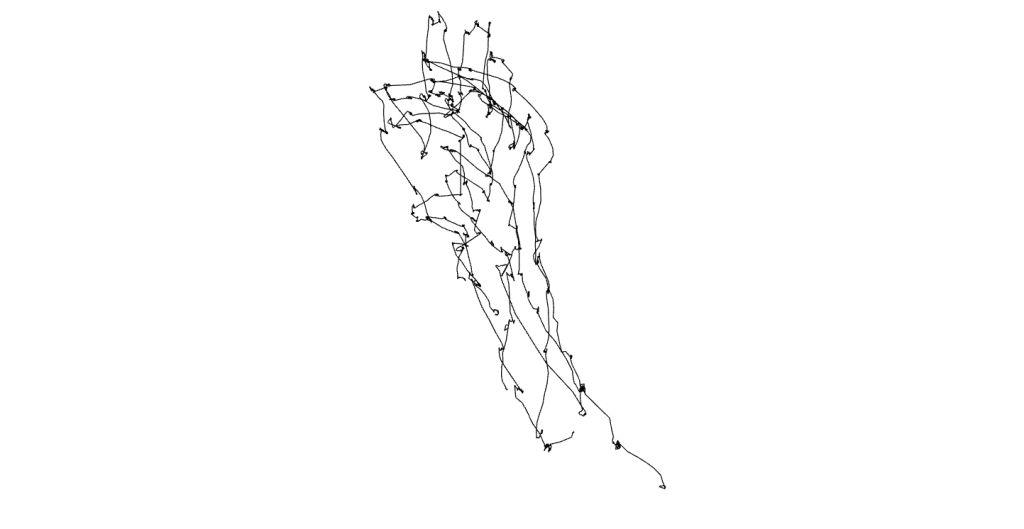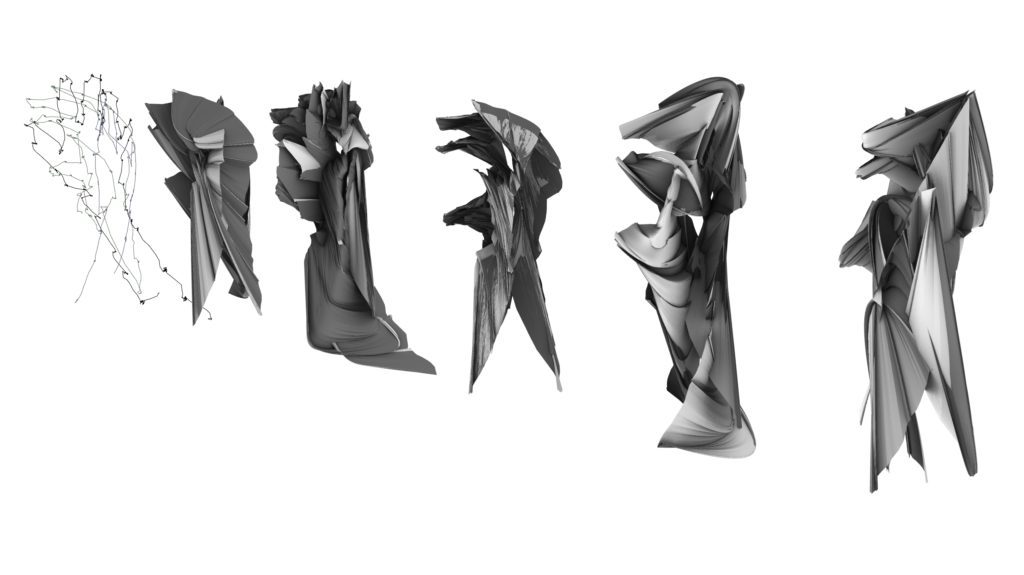
Figure 15: Rotating animation illustrating the sculptural development from three intersecting eye-drawings of a hand
Eye drawing a subject from different viewpoints has an exploratory feel to it. It can arguably find its roots in ‘Cubist’ ways of dealing with our perception of the world, but in contemporary times I cannot not help thinking about the phenomenon and popularisation of 3D scanning (and photogrammetry). In experiments like Figure 13 and Figure 14, I am essentially attempting a ‘synthetic’ 3D ‘contour-like’ scan of my hand by drawing with my eyes.
Figure 15 illustrates a rotating animation of the intersecting three eye-drawings from Experiment 13. The hand eye-drawings have been lofted around their axis, transforming the eye-drawings into a 3D representation.
Figure 16 illustrates more lofted sculptural developments through the same logic.
These images deserve a pause of reflection in view of possible future experiments and further developments. The discourse surrounding results like Figure 15 and Figure 16 can initiate from the idea of what Manning (2007, p. 77) describes as events of perception, or ‘prehensions’. Manning speaks about Marey’s interest in creating machines and processes which do not strictly represent movement but bring into being new modalities of perception. It is this sense of unfamiliarity which leads to further experimentation, and in Murray’s case led him to actually commission a bronze representation of the bird in flight; emphasising the fact that he was not only concerned with a quantitative analysis of the movement of the wings (Manning, 2009, p. 99).
Even though my world is not Marey’s, and my perception of it varies greatly from his, I believe that the appropriation of the notion of creating ‘new modalities of perception’ as a leading factor for novel experimentation, is an important framework in view of these sculptural developments.
It is important not to view the eye-drawings as no more than data of recorded movements. They have to be acknowledged as perceptive moments in time and space belonging to a meaningful subject matter.
These developments can potentially highlight the historical relationship between drawing and sculpture; between projection and realisation. A certain degree of their execution can also be associated to generative art. The eye-drawings and decision making of how to arrange them in the virtual space is my doing, but the practice of lofting (or any other surface creation) is principally computer-assisted. Even though I am presented with several variable options regarding the latter (curve degree, rebuilding curves and curve direction among others), I can never be in total control (or anticipation) of the resulting representation. There will always be an element of surprise and a degree of trial and error in this practice, which I find stimulating.
More experimentation also raises the question of whether the sculptures should remain in the virtual environment (video, VR, AR, etc.) or be digitally fabricated (when possible).
__________
References:
Manning, E. (2009). Relationscapes Movement, Art, Philosophy. Cambridge: The MIT Press.

Figure 16: Various sculptural developments from three intersecting eye-drawings of a hand